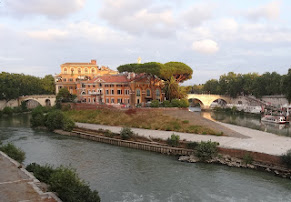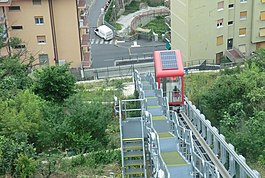Life’s work earned nickname ‘the 007 of art’
Rodolfo Siviero, an Italian intelligence officer who recovered hundreds of priceless works of art stolen from Italy by the Nazis in World War Two, was born on this day in 1911 in Guardistallo, a village just inland from the Tuscan coast about 50km (30 miles) south of Pisa.
Rodolfo Siviero spent his entire career
hunting down plundered works of art
Siviero spent the whole of his adult life working for Italian military intelligence, first under the Fascist regime and then in the permanent employ of postwar Italian governments until his death in 1983.
During that time, effectively his sole mission was to track down and repatriate works of art taken from Italy during World War Two, many of which had been destined for a museum of the German dictator Adolf Hitler planned to open in Linz, or to the private collection of his long-time ally and Luftwaffe chief, Hermann Göring.
He achieved remarkable success, not only in bringing looted works back to Italy, but also in establishing a country’s right to ask for the return even of works that were previously seen as having been acquired legitimately by the aggressor in a conflict.
In all, Siviero is thought to have recovered more than 3,000 works of art, including masterpieces by Fra Angelico, Titian, Tintoretto, Masaccio and Antonio del Pollaiuolo, as well as the so-called Lancellotti Discobulus, an Italian-owned copy by an unknown sculptor of the ancient Greek original by Myron that the Fascist Italian government had been effectively coerced into selling to the Nazis.
Siviero’s association with the world of the arts began after his father’s career as a Carabinieri officer led the family to move to Florence in 1924. With ambitions to become an art critic, Siviero enrolled at the University of Florence.
In the 1930s, convinced that only a totalitarian regime could solve Italy’s problems as a country, he became a Fascist and at the same time joined the Servizio Informazioni Militare, Italy's secret service.
In 1937, even though by this time Italy and Germany were allies, Siviero was sent by the SIM to spy on the Nazi regime in Berlin. His cover was that he was studying the history of art on a scholarship from the University of Florence. His mission ended in 1938 when Germany expelled him as an ‘undesirable person’ for reasons that remain unexplained.
 |
| German soldiers in Rome posing with a painting by Giovanni Paolo Panini stolen from a Naples museum |
When the armistice between Italy and the Allies was announced in 1943, he switched sides, becoming an undercover operative for the anti-Fascist front, supplying intelligence for the partisans and monitoring the activities of the Kunstschutz, the body originally set up to protect cultural heritage during the war years but was now suspected of co-ordinating the large-scale shipping of artworks from Italy to Germany under Nazi direction.
During this time, Siviero was based at the Jewish art historian Giorgio Castelfranco's house on the Lungarno Serristori in Florence, which today houses the Casa Siviero museum. At one point, he was imprisoned and tortured by Fascist militias but stood firm against their interrogation. Happily, he escaped with the help of Fascist officials working undercover for the Allies.
The Servizio Informazioni Militare was disbanded in 1944 but Siviero continued to work with the Allies and for the new Armed Forces Intelligence Service established in 1949. In the meantime, postwar prime minister Alcide De Gasperi in 1946 appointed him "minister plenipotentiary".
 |
| Tintoretto's Leda and the Swan, which Siviero repatriated despite it having been sold to Germany |
This enabled him to repatriate the Lancellotti Discobolus - a statue of a discus-throwing athlete wanted by Hitler himself - along with the Leda and the Swan by Tintoretto, the Equestrian Portrait of Giovanni Carlo Doria by Rubens, and 36 other works, all ‘sold’ to Germany between 1937 to 1943 with the complicity of the Mussolini’s regime. The sale of the Discobolus was agreed only after the direct intervention of Galeazzo Ciano, Mussolini’s son-in-law and his Foreign Minister.
Other major works saved or recovered by Siviero included Fra Angelico’s Annunciation of San Giovanni Valdarno, which with the help of two monks he hid in the convent of Piazza Savonarola in Florence, and the Danae by Titian, which was taken from the Museo di Capodimonte in Naples and hidden in the Abbey of Monte Cassino, where the Apollo from the ruins of Pompeii was also secreted.
Siviero recovered more than 200 paintings taken from the Uffizi and other Florence museums and hidden in a castle in South Tyrol, and tracked down two paintings of The Labours of Hercules by Antonio del Pollaiuolo to an address in Los Angeles, where they had been smuggled by two German soldiers.
He also saved several modern paintings by Giorgio De Chirico, founder of the Scuola Metafisica, that had been taken from his villa in Fiesole, outside Florence, after he and his wife - a Russian Jew - had gone into hiding.
Siviero continued recovering missing paintings and sculptures for the remainder of his life, acquiring the ‘007 of art’ nickname in the 1960s, after the first James Bond films appeared on cinema screens. In the 1970s, he became president of the Accademia delle Arti del Disegno in Florence.
He died from cancer in the Tuscan capital in October 1983, his body laid to rest in the Chapel of Painters in the Basilica della Santissima Annunziata. In his will, he left his house and all its contents to the Regione Toscana, which turned it into a museum dedicated to him eight years after his death.
Travel tipGuardistallo is full of pretty
narrow stone streets
Guardistallo, where Rodolfo Siviero was born, is a picturesque hilltop village in Tuscany known for its medieval origins, charming stone streets, and sweeping views over the nearby coastline. Originally built around a Lombard castle in the seventh century, it later became part of the Republic of Pisa and then Florence, flourishing after agrarian reforms in the 18th century created a new class of wealthy landowners. Pastel-painted houses and stone stairways line the narrow streets of Guardistallo, which retains a medieval layout. The village, which has a population of around 1,200, is home to the historic Teatro Marchionneschi, a beautiful 19th-century theatre built by the wealthy Marchionneschi family. Opened in 1883, it eventually fell into disuse, but was reopened in 1990 following extensive restoration and today hosts theatre performances, concerts, and special events. Siviero's birthplace in Via dell'Erbaio is marked with a plaque.
Stay in Guardistallo with Hotels.com
Travel tip:
The Basilica della Santissima Annunziata in
Florence, where Siviero was laid to rest
The Basilica della Santissima Annunziata, where Rodolfo Siviero is buried, is in the Piazza della Santissima Annunziata in the San Marco district of Florence. Considered the mother church of the Servite Order, it is located at the northeastern side of the square. The facade of the church is by the architect Giovanni Battista Caccini, added in 1601 to imitate the Renaissance-style loggia of Filippo Brunelleschi's facade of the Foundling Hospital, which defines the eastern side of the piazza. The main part of the church, founded in 1250, was rebuilt by Michelozzo between 1444 and 1481. Art works in the church include frescoes by Volterrano and Andrea del Sarto. The Cappella della Madonna del Soccorso was designed by the sculptor Giambologna for his own tomb and includes a large, bronze Crucifix, showing the dead Christ with his head reclining and his eyes closed. Other notable Florentines buried in the basilica include painter Jacopo Carucci da Pontormo, the architect Caccini’s brother, Giulio, a composer, and the musician Bernardo Pisano, thought to have composed the first madrigal. By tradition, newly-wed couples visit the church to present a bouquet of flowers to a painting of the Virgin by a 13th century monk, where they pray for a long and fruitful marriage.
Search Florence hotels with Expedia
More reading:
Umberto Baldini, the art restorer who saved hundreds of works damaged by Arno floods
Why family ties could not save Galeazzo Ciano from Mussolini’s wrath
The armistice that ended Italy’s war with the Allies
Also on this day:
1639: The birth of composer Domenico Sarro
1836: The birth of canning pioneer Francesco Cirio
1897: The birth of supercentenarian war veteran Lazzaro Ponticelli
1930: The birth of electronics engineer Pier Giorgio Perotto
Vigilia di Natale - Christmas Eve




.jpg)











.jpg)
.jpg)
.jpg)




.PNG)










